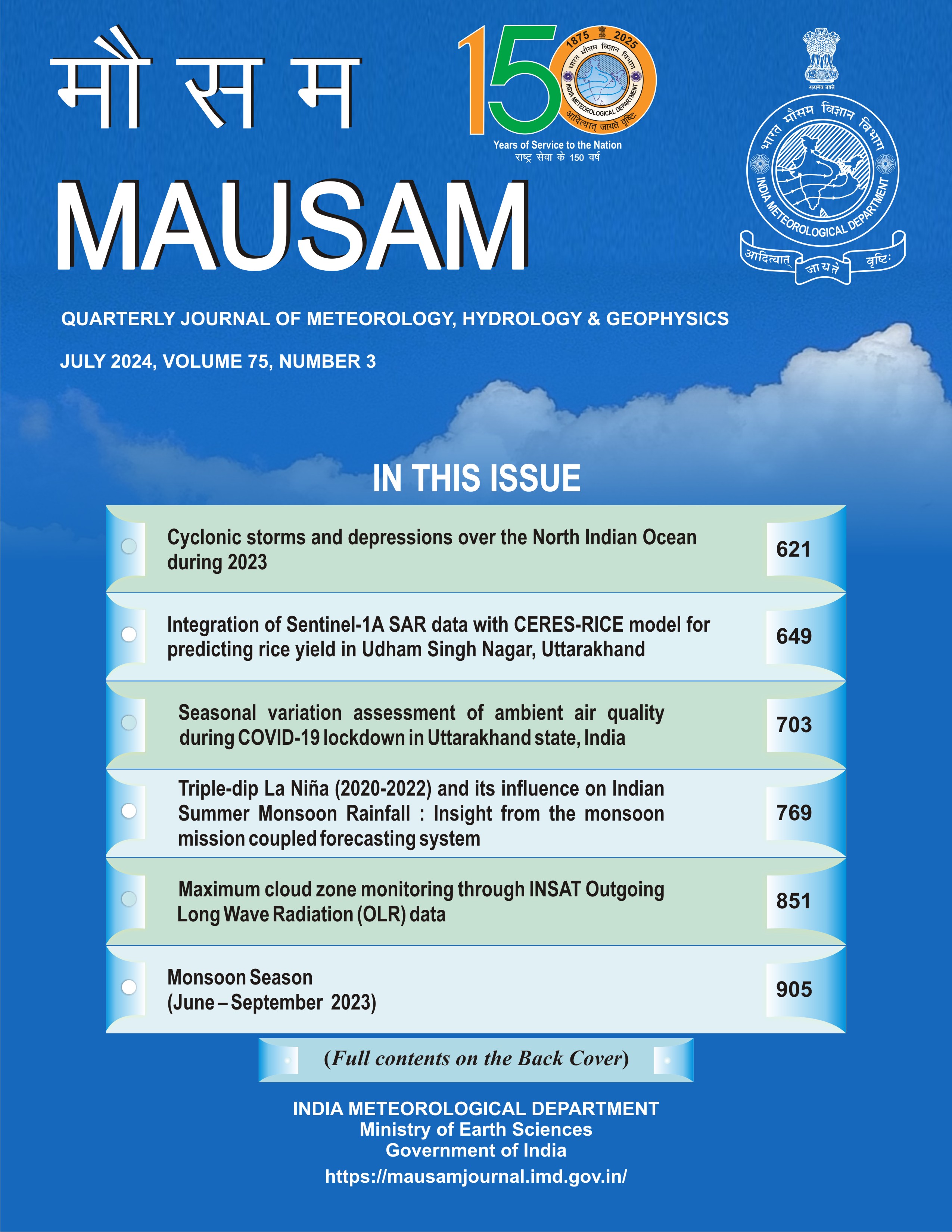Maximum Cloud Zone Monitoring through INSAT Outgoing Long Wave Radiation (OLR) data
DOI:
https://doi.org/10.54302/mausam.v75i3.5915Keywords:
Indian Summer Monsoon, OLR, Meridional propagation, active and break period, INSAT dataAbstract
Scanning radiometers on-board the meteorological satellites measure the radiance in narrow windows within the visible and infra-red spectra. For example, in the case of the INSAT VHRR these windows are 0.55-0.75µ and 10.5-12.5µ respectively. The broad-band outgoing longwave radiation and the planetary albedo are derived indirectly from such window measurements by applying physical and/or statistical algorithms. Geostationary satellite (INSAT-3D/3R) narrowband based OLR observations offer the significant advantage of an instantaneous response to surface temperature changes and played an important role in Indian Monsoon activity.
It has been shown that Indian Summer Monsoon (ISM) phases starting from onset, active and withdrawal are associated with the development of a Maximum Cloud Zone (MCZ) near the equatorial belt and its northward propagation. The alterations or oscillations between onset, active, break periods of the ISM can easily be monitored through meridionally propagating cloud bands as 30 to 50 days periodicity. Localized weather events also affect the periodicity of these MCZ every year differently. These varying periodicities and their amplitude peaks (30 days, 40 days, 20, days 8 days or lower) of OLR propagation/amplification modes during monsoon season were attributed to evolution and distribution of monsoon elements, like low level jet, Tibetan High, Mascarine High, Cross equatorial flow and dry and moist static stability and their cooperative interaction with lower troposphere over India.
Downloads
Published
How to Cite
Issue
Section
License
Copyright (c) 2024 MAUSAM

This work is licensed under a Creative Commons Attribution-NonCommercial 4.0 International License.
All articles published by MAUSAM are licensed under the Creative Commons Attribution 4.0 International License. This permits anyone.
Anyone is free:
- To Share - to copy, distribute and transmit the work
- To Remix - to adapt the work.
Under the following conditions:
- Share - copy and redistribute the material in any medium or format
- Adapt - remix, transform, and build upon the material for any purpose, even
commercially.



